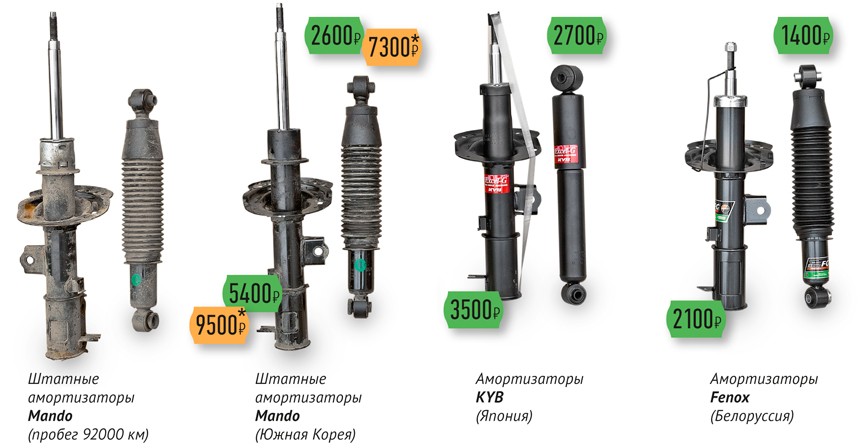
When to change front struts
Know the signs that A-pillars need replacing and when to take your car in for repair.
The struts at the front of your vehicle are a vital component of your suspension system. They are responsible for properly leveling, balancing, and smooth running of a car, truck, or SUV while on the job. Like any moving part, struts wear out over time. By proactively replacing the A-pillars in accordance with the manufacturer's recommendations, you can avoid further damage to steering and suspension components such as shock absorbers, ball joints and tie rod ends, reduce tire wear and ensure safe vehicle operation. .
Let's take a look at a few common warning signs of damaged or worn struts, as well as some tips for getting them replaced by a professional mechanic.
What are the symptoms of strut wear?
The front pillars of your car, truck and SUV are attached to the front of your vehicle. They help with steering, braking and acceleration. While the top and bottom of the strut are attached to solid automotive components that don't move, the strut itself often moves up and down. This constant movement eventually wears them out or damages the internal components of the uprights. Here are 6 common signs of strut wear:
1. Steering response is not the best. If you notice that your car's steering is sluggish or not as responsive as usual, this is usually a warning sign of damaged or worn struts.
2. Steering is hard. This symptom is different from steering response. If you turn the steering wheel from left to right and vice versa and notice that the steering wheel is difficult to turn, this is a sign of damage to the rack.
3. The vehicle wobbles or leans when turning. Strut struts help keep the vehicle stable while cornering. If you notice that the car leans to one side when it is stationary or when you turn, this usually indicates that the struts need to be replaced.
4. Excessive bouncing while driving. When you're driving down the road and you notice that the front of your car bounces more often, especially when you're driving over bumps in the road, it may mean it's time to replace your A-pillars.
5. Premature tire wear. When the struts wear out, it can lead to tire damage. Struts are an important component influencing suspension balance. If they are damaged, they can cause the front to be out of alignment, which can lead to more tire wear on the inside or outside edges.
6. Poor braking performance. The struts also help balance weight throughout the car. When they wear out, they can cause more weight to be transferred to the front of the car during braking, which reduces braking performance.
When should front struts be replaced?
Each car is different, which makes it difficult to get a simple answer to this question. In fact, ask most mechanics when the front struts should be replaced and you'll probably be told every 50,000-100,000 miles. That's a huge gap in mileage. In truth, the life of the struts and support shock absorbers will be highly dependent on driving conditions and patterns. Those who drive frequently on city roads and highways may experience longer struts than those who live on country roads.
The best answer to this question is to follow three general rules of thumb:
Check the struts and suspension every 25,000 miles or when you notice premature tire wear. Most car mechanics suggest checking front suspension components every 25,000 to 30,000 miles. Sometimes this proactive check alerts the vehicle owner to early problems so minor repairs don't turn into major mechanical failures. Early tire wear is also a warning sign of worn suspension components such as A-pillars.
Always replace worn struts in pairs. Like brakes, A-pillars should always be replaced in pairs. This ensures the overall stability of the vehicle and that both struts are responsible for keeping the vehicle stable. In fact, most mechanics and repair shops do not perform any strut replacement due to liability reasons.
After replacing the struts, make sure the front suspension is level. Regardless of what your local mechanic may tell you, any time struts or front suspension components are removed, professional suspension adjustment is a vital step.
